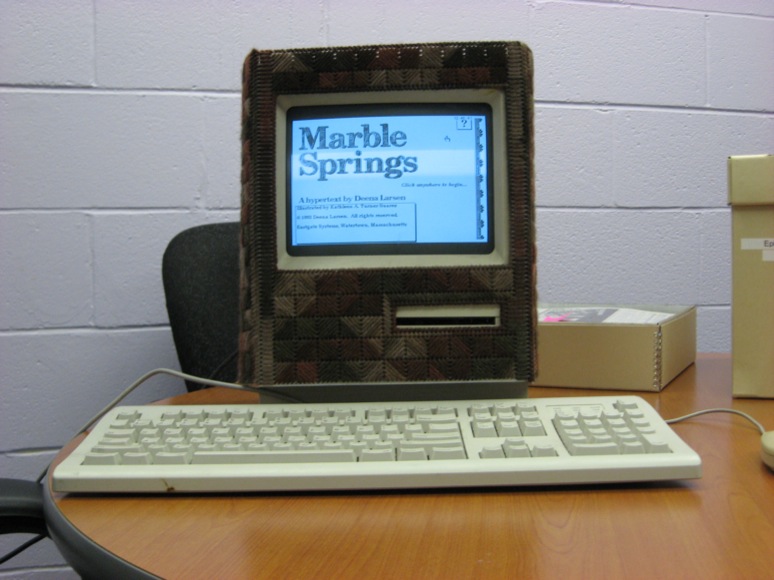Dissect and Rebuild: Reimagining Frankenstein as E-Lit
Posted by on Wednesday, February 29th, 2012 at 11:01 pmFor our group teaching tomorrow, Kristin Gray, Kathryn Skutlin, and I will begin class by demoing various forms of e-lit, followed by an e-lit exercise where you’ll re-imagine a pivotal scene of Frankenstein through the possibilities of e-lit (we’ll pass out handouts in class, but if you want a digital copy you can download this or see the assignment on my personal blog).
E-lit mentioned in class:
- Both Michael Joyce’s afternoon and Deena Larsen’s Marble Springs can be purchased from Eastgate Publishing. Or… make an appointment with MITH to read these and more e-lit on the original hardware, or visit the Deena Larsen Collection site to read more about Larsen’s work or watch a short video demo of Marble Springs.
- Larsen’s “Fun da mentals: Rhetorical Devices for Electronic Literature” is a fantastic site teaching basic approaches to writing e-lit.
- Caitlin Fisher’s These Waves of Girls is a 2001 Flash-based work.
- The Urban 30 is an example of a “fictional blog” based on WordPress (just like this site–well, the WordPress part!); in this case, multiple writers uses the blog community to write in as fictional characters. Urban 30 is particularly interesting because it tells a superhero story, a genre that was born and lived for a long time solely in comic books.
- The 21 Steps is a story told through Google Maps. Notice how this platform complements how important location is to the story.
- “Haircut” uses YouTube to create a choose-your-own-adventure video. If you’re curious how to do this, check out this tutorial on creating annotated YouTube videos.
- Stories created using texts and Twitter have taken off; “mobile phone novels” are especially popular in Japan, where this article claims they’ve “become so successful that they accounted for half of the ten best-selling novels in 2007.” This short article gives a sense of the kinds of stories people write via Twitter.
- In addition to individual-authored Twitter stories, large groups of strangers have used this platform for communal writing. The LA Flood Project was an event that encouraged Twitter users to tweet (with an #laflood hashtag) as if they were experiencing an apocalyptic flood in L.A. This page gives the brief timeline participants were supposed to follow; you can search Twitter for #laflood to see the story unfold, though it was most exciting in real-time (the latest tweets are just people rehashing the week-long event).
- And finally, the Electronic Literature Organization (ELO) hosts the Electronic Literature Collection 1 and Collection 2, which display a wide variety of approaches to electronic writing.
You can follow any responses to this entry through the RSS 2.0 You can leave a response, or trackback.



Since you posted this and told us about them, I admit, I’ve been engrossed in “The 21 Steps” whenever time permits. It is really brilliant (and a fast read). There is something gripping in seeing the movements of a character. The tale feels more immediate, as though one is watching it happen in the exact moment. Further, I enjoyed how it adds an aspect of time to the tale–not only does reading it take time (the same with any book), but you have to wait for the next part of the story while the character travels. That may sound awkward, but I found it quite enjoyable. The setting becomes so clear and one can visualize the story in a totally new way. I really love it. I shall have to look for another like it.
That’s awesome to hear! “21 Steps” is one of my favorite newer web-based stories. It’s so successful at tying the platform into the narrative–kind of makes me want to run through a thought experiment of platforms that don’t yet have narratives based on them and how one would do that meaningfully. (Though I’m having trouble imagining a Blackboard/ELMS-based story I’d want to read…)
Pingback: Dissect and Rebuild: Reimagining Frankenstein as E-Lit | Literature Geek
Pingback: lustro piotrków